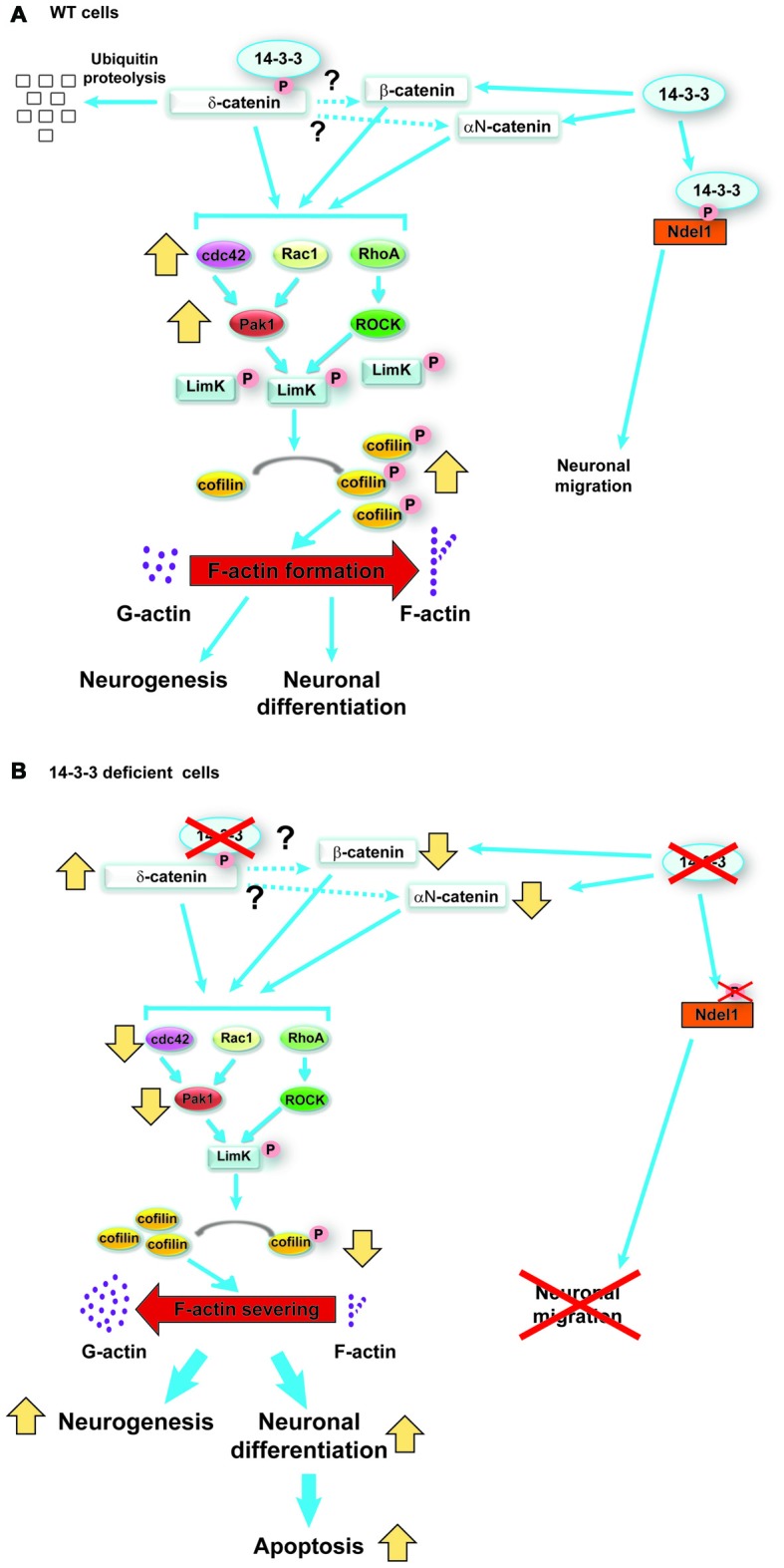Figure 3.

Schematic model of the functions of 14-3-3ε and 14-3-3ζ in neurogenesis and neuronal differentiation during cortical development, reproduced with permission from the Society for Neuroscience (Toyo-Oka et al., 2014). (A) In wild-type (WT) progenitor cells, 14-3-3ε and ζ interact with δ-catenin and regulate its ubiquitination and subsequent degradation. δ-catenin then may regulate the stability of β-catenin and αN-catenin (dotted lines). The catenin proteins then activate the Rho family of GTPases, which in turn results in the phosphorylation of Limk1 through Pak and ROCK proteins. Then, phosphorylated Limk1 phosphorylates cofilin. Phosphorylated cofilin is inactive and will not sever F-actin, resulting in accelerated F-actin formation. (B) In contrast, when the progenitor cells are deficient in 14-3-3ε and ζ, the δ-catenin protein levels increase. This results in an opposite cascade of events resulting in increased neurogenesis and neuronal differentiation as well as defects in the subsequent neuronal migration.
